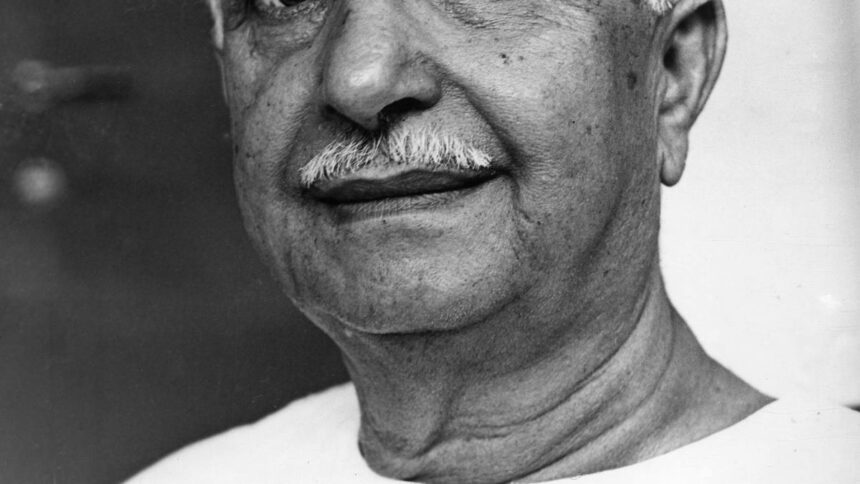[ad_1]
Vanamala Viswanatha’s English translation of Kuppalli Venkatappa Puttappa’s (Kuvempu) magnum opus Malegalalli Madumagalu is a significant cultural milestone. The translation, released in Bengaluru last weekend, is among the many by the scholar, teacher and translator Vanamala, who has for long championed voices of Kannada literature and sought to bridge the gap between regional and global readerships.
In this interview with The Hindu, Vanamala delves into why Malegalalli Madumagalu deserves recognition beyond Karnataka’s borders, the complexities of translating a text steeped in the cultural and linguistic nuances of the Malnad region, and how her broader work in translation continues to highlight the richness of Kannada’s literary heritage. She also discusses the evolving role of translators in India, acknowledging the growing visibility and recognition they now receive.
Why did you decide to translate Malegalalli Madumagalu?
Kuvempu has not received much attention outside Karnataka though he deserves it. Translating his work is not just a personal choice, because it is a culturally significant move… When I started thinking about Kuvempu’s work, I realised that only his first novel Kanuru Heggadati from the year 1936, was translated and published in English sometime in the 2000s by Ramchandra Sharma. But Malegalalli Madumagalu was not translated. There were rumors that another translator was going to publish a translation of it, but that rumour lasted for five years, and nothing came out of it. So, I decided to give it a try. I re-read it, it had so many fascinating characters. What caught my attention were the stunning women characters in this novel, they appealed to me a great deal. I started translating excerpts from it, and eventually translated the entire novel.
However, as we were wrapping up the translation, a translation of the book was released by Rashtrakavi Kuvempu Pratishtana, translated by Dr. K.M. Srinivasa Gowda and G.K. Srikanata Murthy. Our publishers Penguin said that it was alright, and all classics have many different translated versions, and it was not a problem. We approached Pratishtana also, and they said it was not an issue and asked me to go ahead. In fact they helped me get copy rights.
What are the specific challenges you faced in translating a text set in late 19th and early 20th century, both in terms of language and ideas?
Malegalalli Madumagalu is very much a regional novel. It is set in the Malnad area, therefore it has the geography, culture, caste and dialect of the region. Translating a book from a regional language to English, which will not have any of these flavours was a big challenge. There are three kinds of registers that the text employs, one is the dialogues among characters, second the narrative and third the reflection of the larger significance of that moment, that particular action and more. Kuvempu brings in his readings of Vedanta, Ramakrishna Paramahamsa, Shankara, Basavanna, psychology, sociology and more. He was a very widely read man, he brings in all that knowledge to understand that present moment in a character’s life.
Those reflective parts were very easy to translate. But dialogues were challenging, they were set in a very hierarchical society. When one addresses another, it is never without some kind of word that indicates a relationship. For example, when a wife addresses a husband in Kannada she says “neevu“ but bringing the same in English is not easy, or when a servant is addressing his employer, we can not say “master” or “my lord”. Such things work in novels that originate in England, not in the Indian context.
You have translated texts from various times in history, ranging from Harihara from 13th century to modern writers like Sara Aboobacker. How does the language of translation change with the text and the time to which it belongs? Are classical texts way too harder to bring to English?
High classical registers are easy to translate because you can use Latinate expressions and register of English is very accommodating. For example, parts of Raghavanka’s Harishchandra Kavya, where the king is speaking, those parts are easier. But when I translated Sara Aboobacker’s work, it was a mixture of three languages, and a story set in Kasargod which is a border town of Kerala and Karnataka. Sara’s mother tongue was Malayalam, she wrote in Kannada, and since it was the story of a Muslim family, there were religious terms in Urdu or Persian. I wanted to retain the multilingual location of the text and decided to keep it that way. The attempt is to highlight the heterogeneity rather than try and make a smooth translation where everybody speaks alike.
What draws you to translation specifically, considering that you are primarily a teacher of English language and literature?
It has been a conscious decision to translate works. There are many translators who translate from English to Kannada, but very few translating from Kannada to English. I felt that I had a role there to play. I have a great affinity to Kannada though I have been teaching English for professional commitments. I am familiar with the terrain of Kannada and therefore I feel this is a culture, a language that has really nourished me. I need to payback, and when I think in what way I can do that best, it is translation of Kannada works to English.
What kind of books and writers do you think need to be translated from Kannada to English and vice versa?
I think Kannada has had a very rich crop of writing over hundreds of years. There is a need for translating the classical – pre-modern writing. Pampa, for instance, who is our Aadi Kavi… his works have not yet been translated to English. Kumara Vyasa is being done now, and I translated Raghavanka’s works. There is a whole body of pre-modern writing that needs to be translated and be made known to the world. Modern writing also needs to be translated. I feel each region has its own character, and it is very important to showcase it. The whole trend of translating has picked up, but Kannada texts also need to be translated to other neighbouring and Indian languages too.
How do you view the translation scene between Indian languages? Is enough happening?
In a country like India, we are living and breathing translations and a lot is happening. We are living in a context of translation. It is so natural, like air. It is shaping us all the time. The accident of my birth in a Tamil-speaking home but in a Kannada dominant area, the accident of me becoming an English professor in a State that speaks Kannada… They have all come together in this one act of translation. Without one, you can not do the other.
Do you think the situation has improved now in terms of how much credit translators get?
As a child I remember reading Victor Hugo’s Les Misérables, as Nonda Jeevi in Kannada. It was one of those faint books where the wrapper had come off but was one of those books where I cried my eyes out. I read the book without ever realising that it was a translation, because there was no name of the translator. From being so invisible that it was nameless, names of translators came to be mentioned in the inner page which was not too long ago. When I was working in the Centre of Translation, Sahitya Academy, I had to make a strong case to have the name of the translators on the cover page, this was sometime in 2002, even then it was a very small print. But now it is more prominent, there are many more awards for translators, reviews avenues, literatures festivals etc. Translations and translators are receiving a lot more prominence now.
Published – October 22, 2024 09:00 am IST
[ad_2]
Source link







